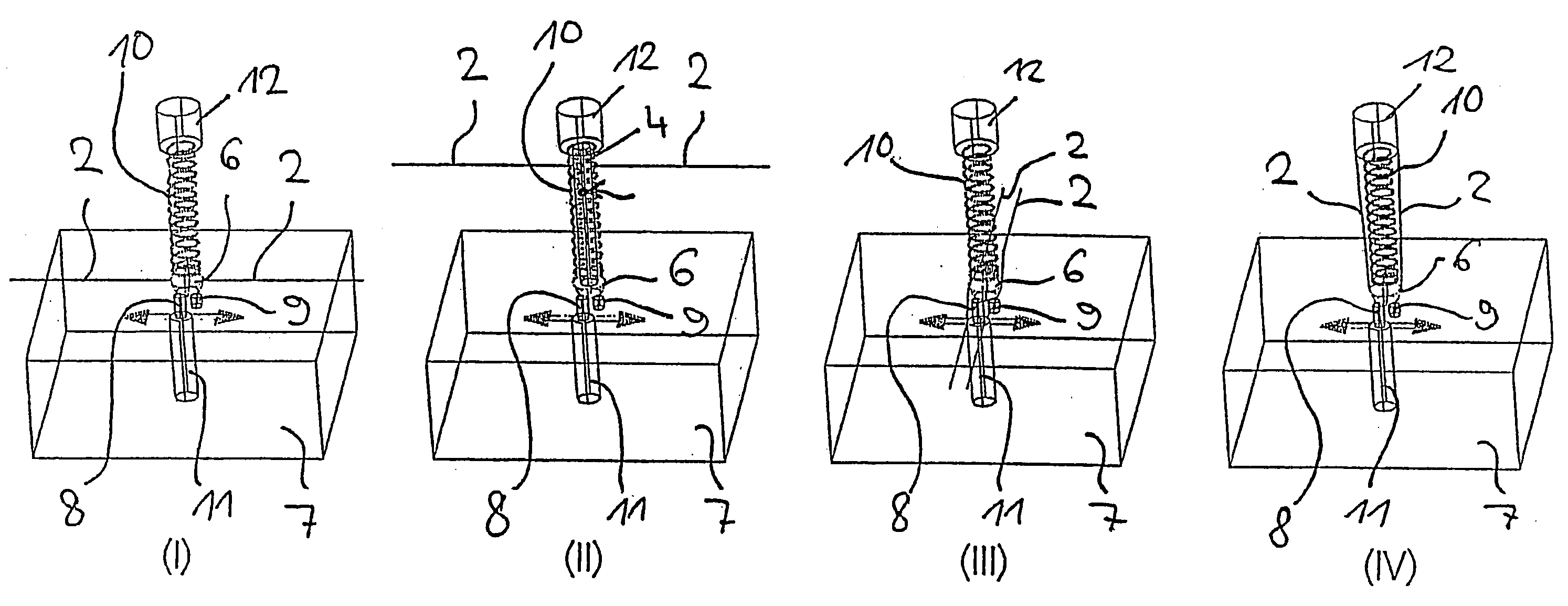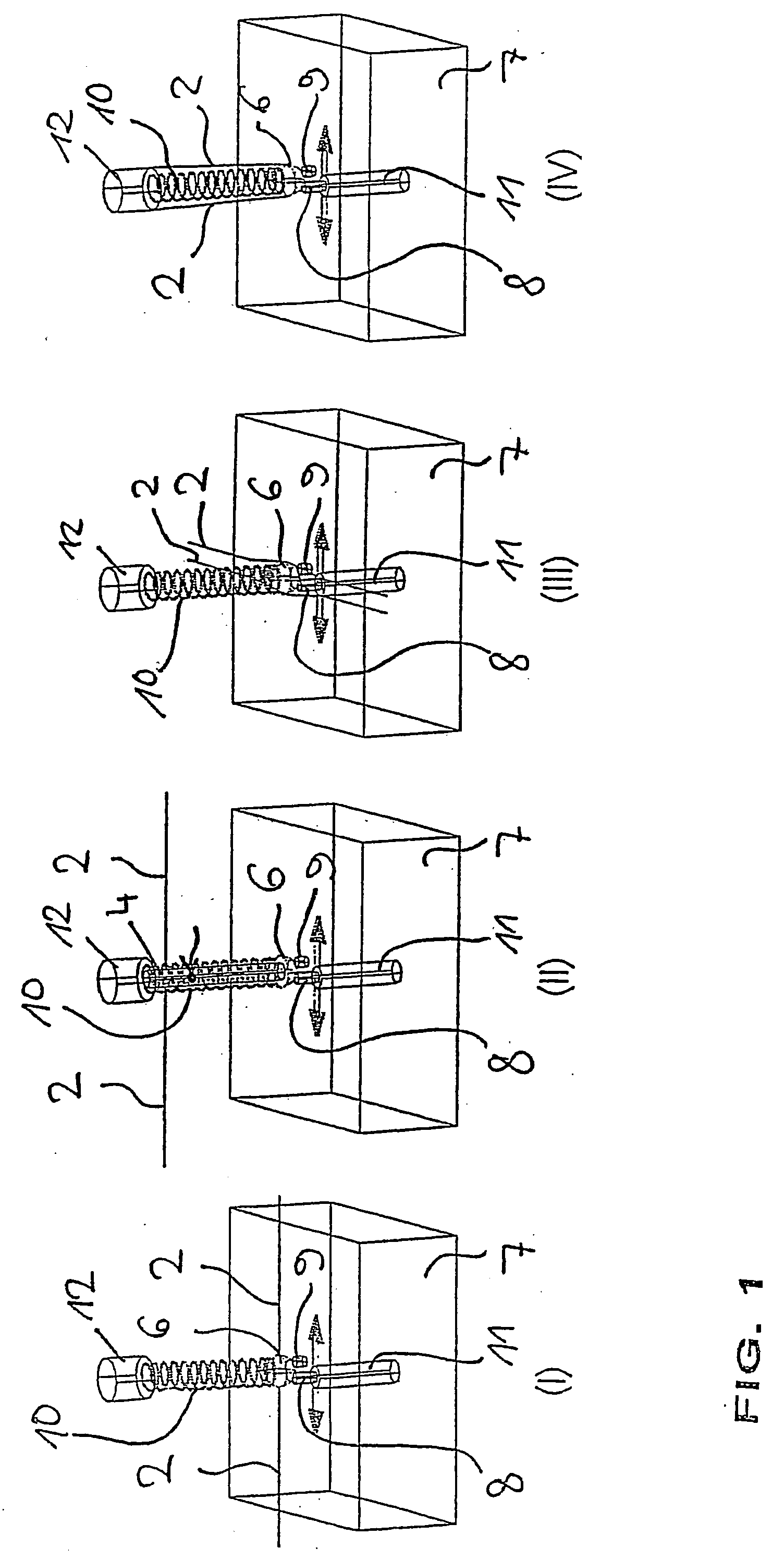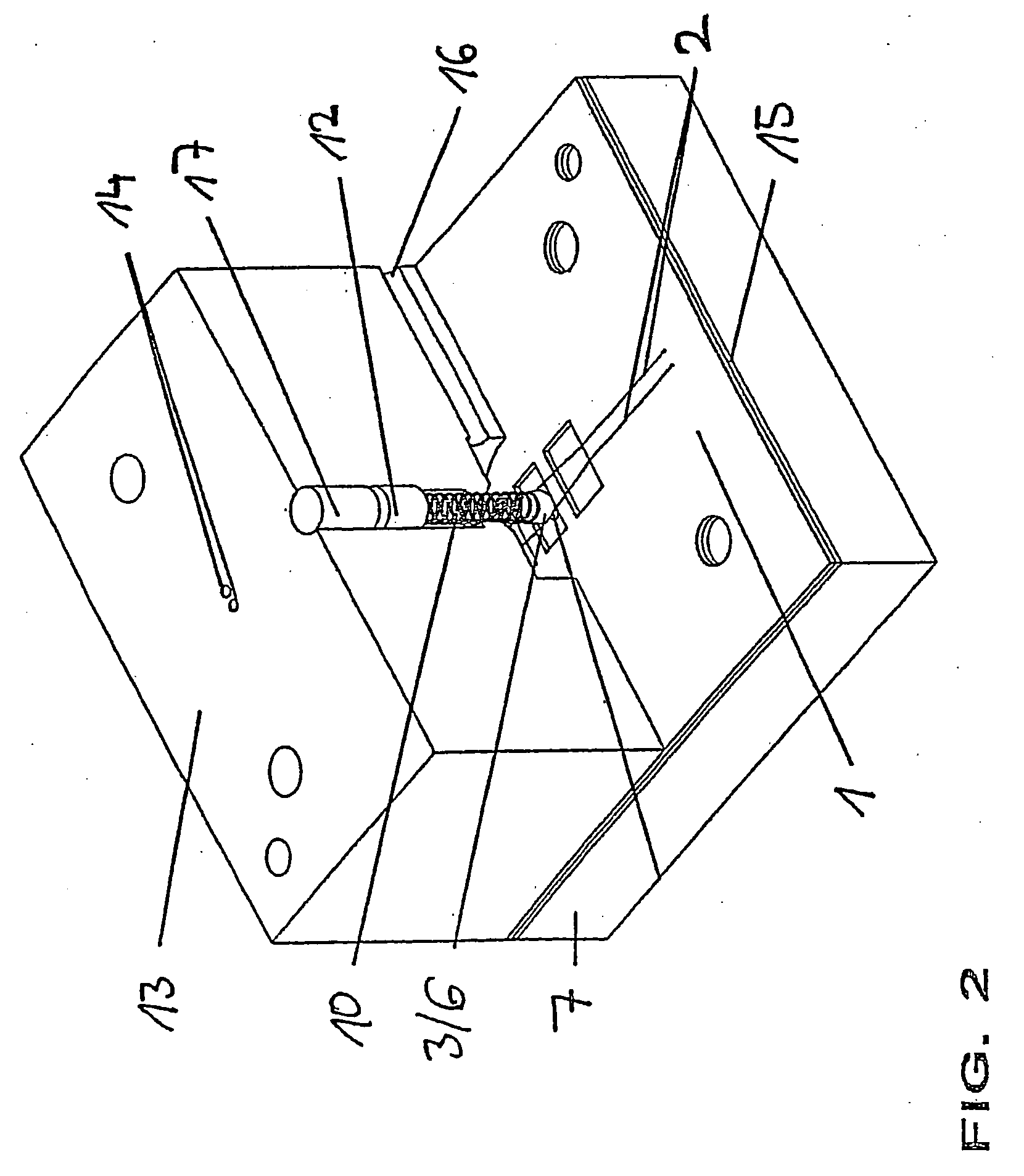Valve with compact actuating mechanism
a technology of actuating mechanism and valve, which is applied in the field of valves to achieve the effects of high mechanical energy density, high mechanical capacity of work, and high energy efficiency
- Summary
- Abstract
- Description
- Claims
- Application Information
AI Technical Summary
Benefits of technology
Problems solved by technology
Method used
Image
Examples
Embodiment Construction
[0020]FIG. 1, in the four sub-figures (I)-(IV), shows four different options for the positioning of the SMA wires 2 of the present actuating mechanism relative to the base body 7, as well as the valve member 3, which may be formed as a ball 6, of the present valve. The four sub-figures in this case serve only to provide illustration in principle, and consequently further elements of the valve, such as for example the way in which the SMA wires are secured, are not illustrated.
[0021] All the sub-figures diagrammatically depict the base body 7 of the valve with the passage opening 8 which is disposed therein and opens out into a valve outlet 11. Next to the passage opening 8, a recess 9 with a blind end is formed in the base body 7, also referred to below as the valve base. In all four illustrations, the ball 6 is above the valve opening 8 in the closed valve state and above the recess 9 in the open valve state. In all cases, the ball 6 is held on the desired position by an elastic m...
PUM
 Login to View More
Login to View More Abstract
Description
Claims
Application Information
 Login to View More
Login to View More - R&D
- Intellectual Property
- Life Sciences
- Materials
- Tech Scout
- Unparalleled Data Quality
- Higher Quality Content
- 60% Fewer Hallucinations
Browse by: Latest US Patents, China's latest patents, Technical Efficacy Thesaurus, Application Domain, Technology Topic, Popular Technical Reports.
© 2025 PatSnap. All rights reserved.Legal|Privacy policy|Modern Slavery Act Transparency Statement|Sitemap|About US| Contact US: help@patsnap.com



